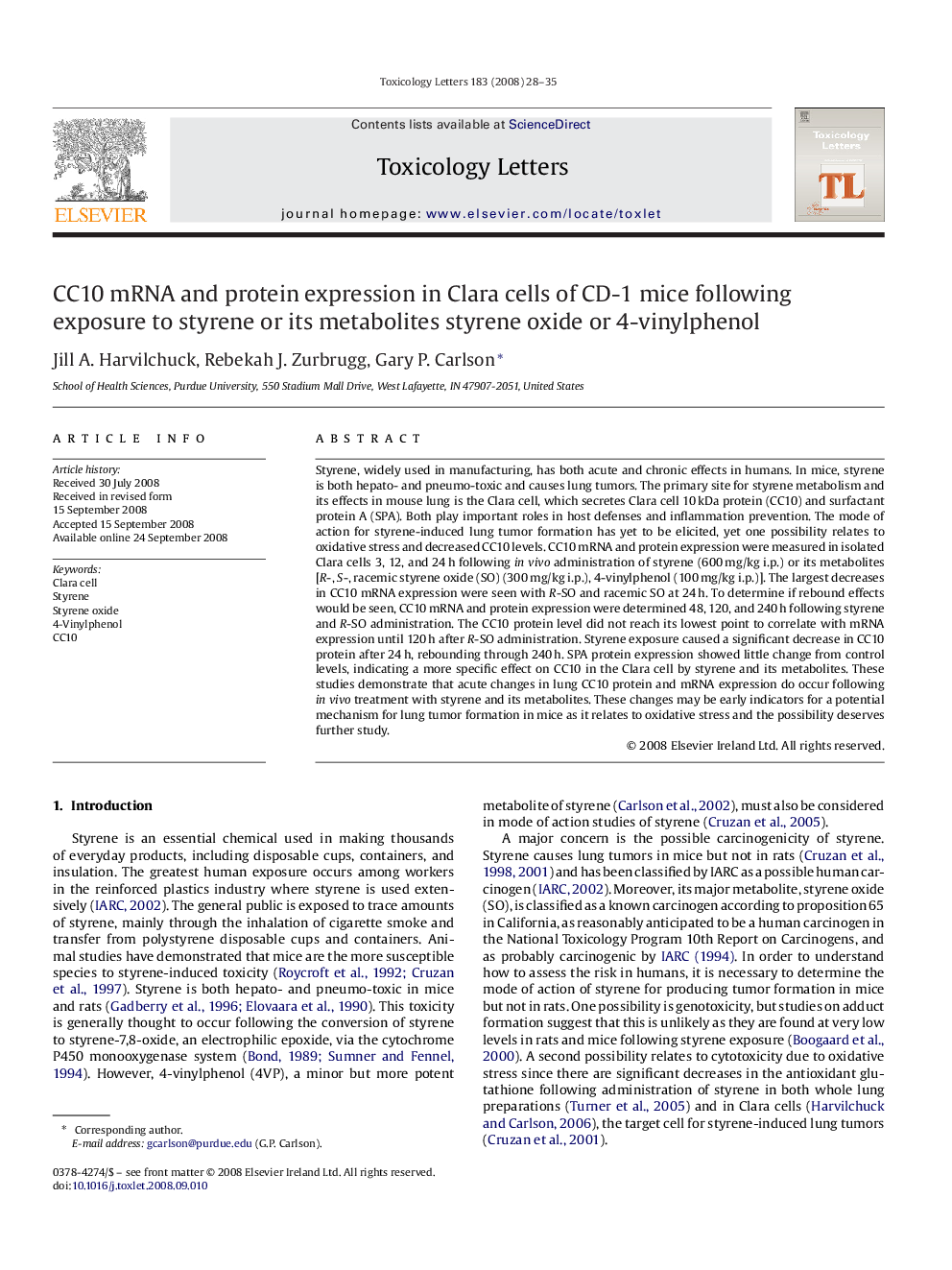| Article ID | Journal | Published Year | Pages | File Type |
|---|---|---|---|---|
| 2601480 | Toxicology Letters | 2008 | 8 Pages |
Styrene, widely used in manufacturing, has both acute and chronic effects in humans. In mice, styrene is both hepato- and pneumo-toxic and causes lung tumors. The primary site for styrene metabolism and its effects in mouse lung is the Clara cell, which secretes Clara cell 10 kDa protein (CC10) and surfactant protein A (SPA). Both play important roles in host defenses and inflammation prevention. The mode of action for styrene-induced lung tumor formation has yet to be elicited, yet one possibility relates to oxidative stress and decreased CC10 levels. CC10 mRNA and protein expression were measured in isolated Clara cells 3, 12, and 24 h following in vivo administration of styrene (600 mg/kg i.p.) or its metabolites [R-, S-, racemic styrene oxide (SO) (300 mg/kg i.p.), 4-vinylphenol (100 mg/kg i.p.)]. The largest decreases in CC10 mRNA expression were seen with R-SO and racemic SO at 24 h. To determine if rebound effects would be seen, CC10 mRNA and protein expression were determined 48, 120, and 240 h following styrene and R-SO administration. The CC10 protein level did not reach its lowest point to correlate with mRNA expression until 120 h after R-SO administration. Styrene exposure caused a significant decrease in CC10 protein after 24 h, rebounding through 240 h. SPA protein expression showed little change from control levels, indicating a more specific effect on CC10 in the Clara cell by styrene and its metabolites. These studies demonstrate that acute changes in lung CC10 protein and mRNA expression do occur following in vivo treatment with styrene and its metabolites. These changes may be early indicators for a potential mechanism for lung tumor formation in mice as it relates to oxidative stress and the possibility deserves further study.
